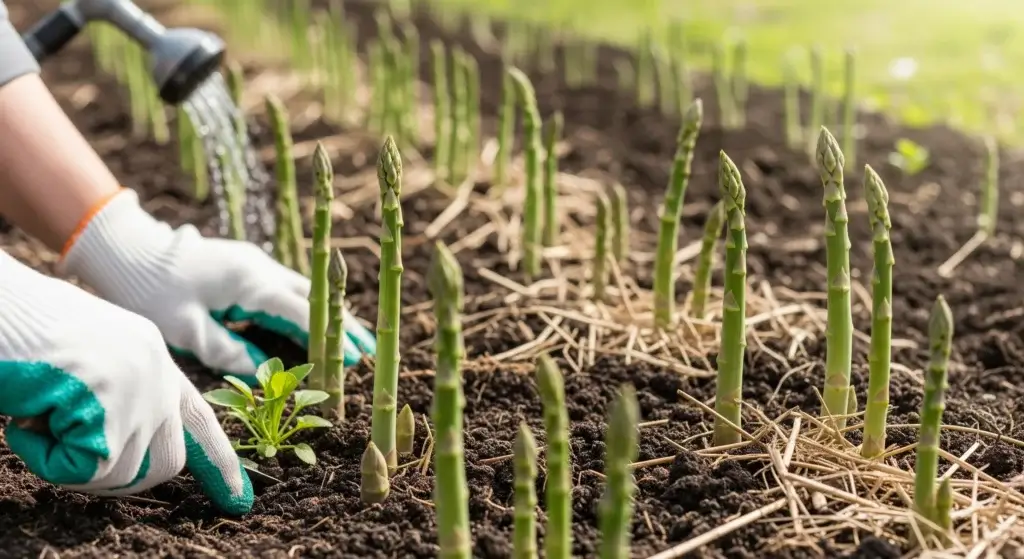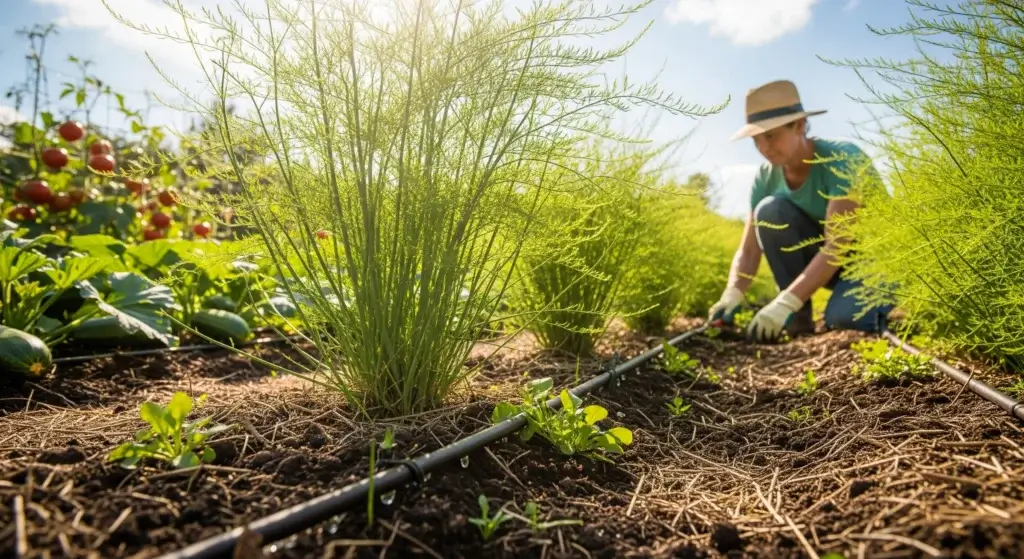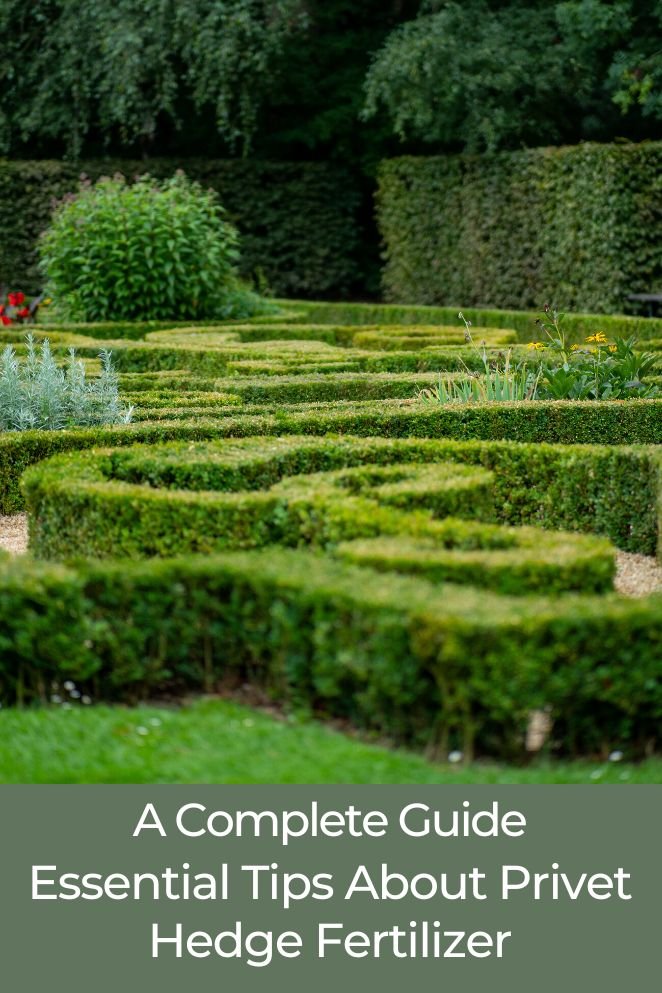
Privet hedges are a popular choice for home landscaping due to their dense foliage and easy maintenance.
However, like any plant, privet hedges require proper care to thrive.
In this blog post, we’ll explore the topic of privet hedge fertilizer, including whether privet hedges need fertilizer, how to choose the right fertilizer, signs your privet hedge needs fertilizer, and how to apply fertilizer.
Do Privet Hedges Need Fertilizer?
Privet hedges have the potential to thrive with or without fertilizer, but applying it can certainly offer benefits.
Fertilizer aids in fostering growth and ensuring the overall health of your privet hedge.
However, it’s essential to exercise caution, as excessive fertilization can lead to undesirable consequences.
- Read also: Keeping Your Garden Green: Privet Hedges Care Tips in Winter
- Read also: Purple Prickly Pear Cactus Care

How to Choose the Right Fertilizer
Selecting the appropriate fertilizer is a critical step in nurturing a healthy and vibrant privet hedge.
Consider the following key factors to make an informed choice that caters to the specific needs of your hedge:
Nutrient content
Opt for a fertilizer with a well-balanced nutrient content, encompassing essential elements like nitrogen, phosphorus, and potassium.
These nutrients play pivotal roles in fostering healthy growth, robust foliage, and overall development of your privet hedge.
Checking the fertilizer label for its nitrogen-phosphorus-potassium (N-P-K) ratio ensures a comprehensive and balanced nutrient supply.
Slow-release formula
Choosing a fertilizer with a slow-release formula is advantageous for sustained nutrient availability.
This formula provides a gradual and consistent release of nutrients over an extended period, reducing the frequency of applications.
The slow-release feature ensures a steady supply of nourishment, promoting a more stable and controlled growth rate for your privet hedge.
Organic or synthetic
Decide between organic and synthetic fertilizers based on your preferences and the specific needs of your privet hedge.
Organic options, derived from natural sources, contribute to soil health and microbial activity. Conversely, synthetic fertilizers offer precise control over nutrient content.
Application instructions
Decide between organic and synthetic fertilizers based on your preferences and the specific needs of your privet hedge.
Organic options, derived from natural sources, contribute to soil health and microbial activity.
Conversely, synthetic fertilizers offer precise control over nutrient content.
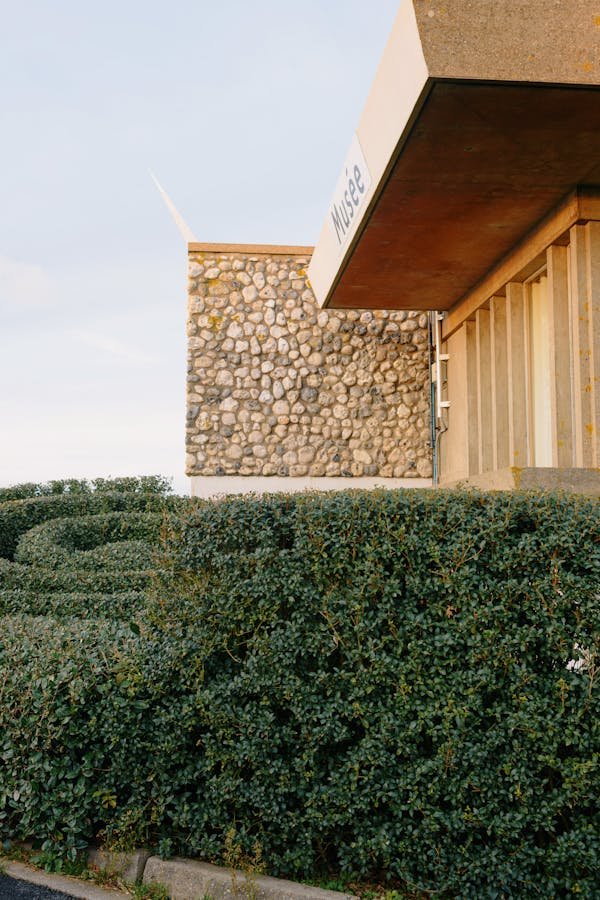
Different Types of Fertilizers That Can Be Used on Privet Hedges
Privet hedges require proper care to thrive, including the right type of fertilizer. Here are some types of fertilizers that can be used.
Slow-release fertilizers
Slow-release fertilizers are a popular choice for privet hedges.
They release nutrients slowly over time, reducing the need for frequent applications. Some slow-release fertilizers suitable for privet hedges include:
15-5-10 fertilizer
A 15-5-10 fertilizer is a common choice for privet hedges.
It contains 15% nitrogen, 5% phosphorus, and 10% potassium, providing the essential nutrients needed for healthy growth.
Organic slow-release fertilizers
Organic slow-release fertilizers, such as compost or manure, can also be used on privet hedges.
These fertilizers release nutrients slowly over time, providing a steady supply of nutrients to the plants.
Organic fertilizers
Organic fertilizers are derived from natural sources and can be used on privet hedges.
Some organic fertilizers suitable for privet hedges include:
Compost
Compost is a natural fertilizer that can be used on privet hedges.
It contains a variety of nutrients that can help promote growth and maintain the health of the plants.
Manure
Manure is another natural fertilizer that can be used on privet hedges.
It contains a variety of nutrients that can help promote growth and maintain the health of the plants.
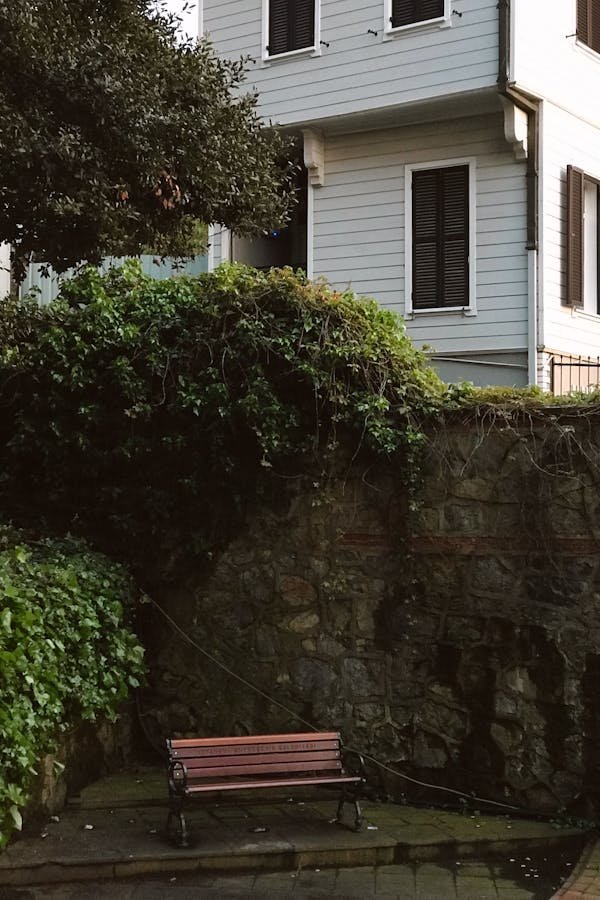
Signs Your Privet Hedge Needs Fertilizer
Ensuring the health and vitality of your privet hedge involves recognizing signs that it may need a nutrient boost.
Here are key indicators that it’s time to consider fertilizing:
Slow growth
Observing slow or stagnant growth in your privet hedge is a clear signal that it might benefit from a fertilizer application.
Adequate nutrients, including nitrogen, phosphorus, and potassium, are essential for stimulating robust growth.
Yellow leaves
Yellowing leaves are a visual cue that your privet hedge may be lacking essential nutrients.
Nitrogen deficiency is often associated with yellowing, indicating that the plant is not receiving enough of this crucial nutrient.
Thin foliage
Sparse or thin foliage is another indication that your privet hedge might be struggling with nutrient deficiencies.
Inadequate nutrients can result in reduced leaf density and hinder the hedge’s ability to create a lush, vibrant appearance.
Poor overall health
General signs of poor health, such as wilting, stunted growth, or overall decline, are strong indicators that your privet hedge is in need of attention.
Fertilizer plays a crucial role in revitalizing stressed or weakened plants.
How to Apply Fertilizer
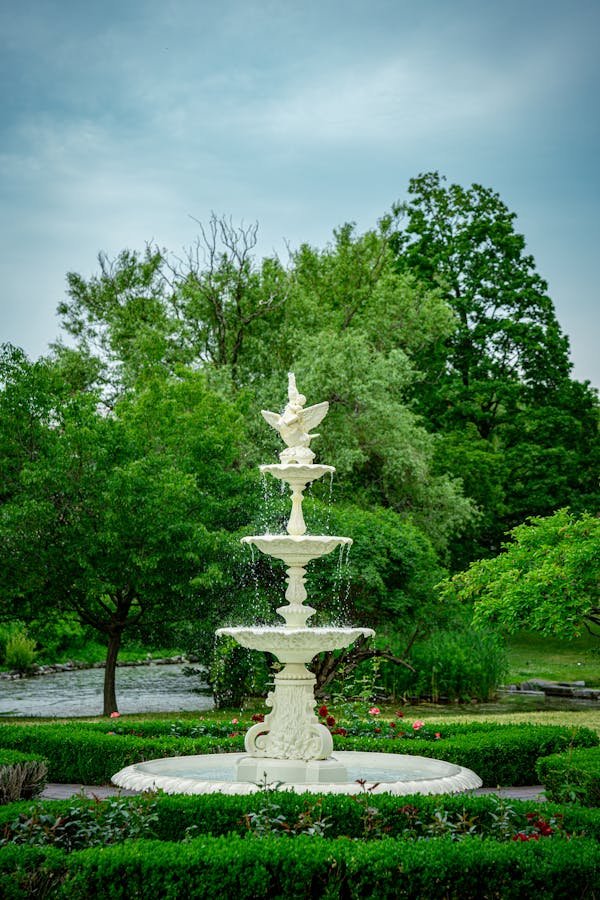
Maintaining the health of your privet hedge involves careful consideration and application of fertilizer.
Follow these detailed steps to ensure optimal results:
Choose the right time
Timing is crucial when applying fertilizer to your privet hedge.
Optimal periods for application are early spring or late fall when the hedge is actively growing.
During these times, the plant’s metabolic processes are at their peak, enhancing the absorption of nutrients.
Applying fertilizer in sync with the hedge’s growth cycle provides the best opportunity for it to benefit from the added nutrients.
Follow the application instructions
Every fertilizer comes with specific application instructions outlined on the label.
Pay close attention to these guidelines to ensure proper and effective application.
Over-fertilization can be harmful to your privet hedge, leading to nutrient imbalances and potential damage.
Adhering to the recommended dosage and method of application contributes to the hedge’s overall health and prevents unintended negative effects.
Water after application
After applying fertilizer, it’s essential to water your privet hedge thoroughly.
This serves two purposes: first, it helps the fertilizer penetrate the soil and reach the roots, ensuring efficient nutrient absorption.
Second, watering prevents any potential damage caused by fertilizer sitting on the foliage.
Adequate moisture ensures a seamless transition of nutrients from the fertilizer to the roots, promoting healthy growth and vitality.
Monitor growth
Post-application, closely monitor the growth of your privet hedge.
This observation allows you to assess the impact of the fertilizer and ensure the hedge is receiving the nutrients it needs.
Healthy growth indicators include increased foliage density, vibrant green color, and overall vitality.
If you notice any signs of over-fertilization or if the hedge continues to exhibit signs of nutrient deficiency, adjust your fertilization regimen accordingly.
- Read also: Mastering Dragon Wing Begonia Care
- Read also: A Guide to Indoor Umbrella Plant Care
Conclusion
Privet hedges can benefit from fertilizer, but they don’t necessarily need it.
When choosing a fertilizer for your privet hedge, consider the nutrient content, slow-release formula, organic or synthetic, and application instructions.
Signs your privet hedge needs fertilizer include slow growth, yellow leaves, thin foliage, and poor overall health.
To apply fertilizer, choose the right time, follow the application instructions, water after application, and monitor growth.

